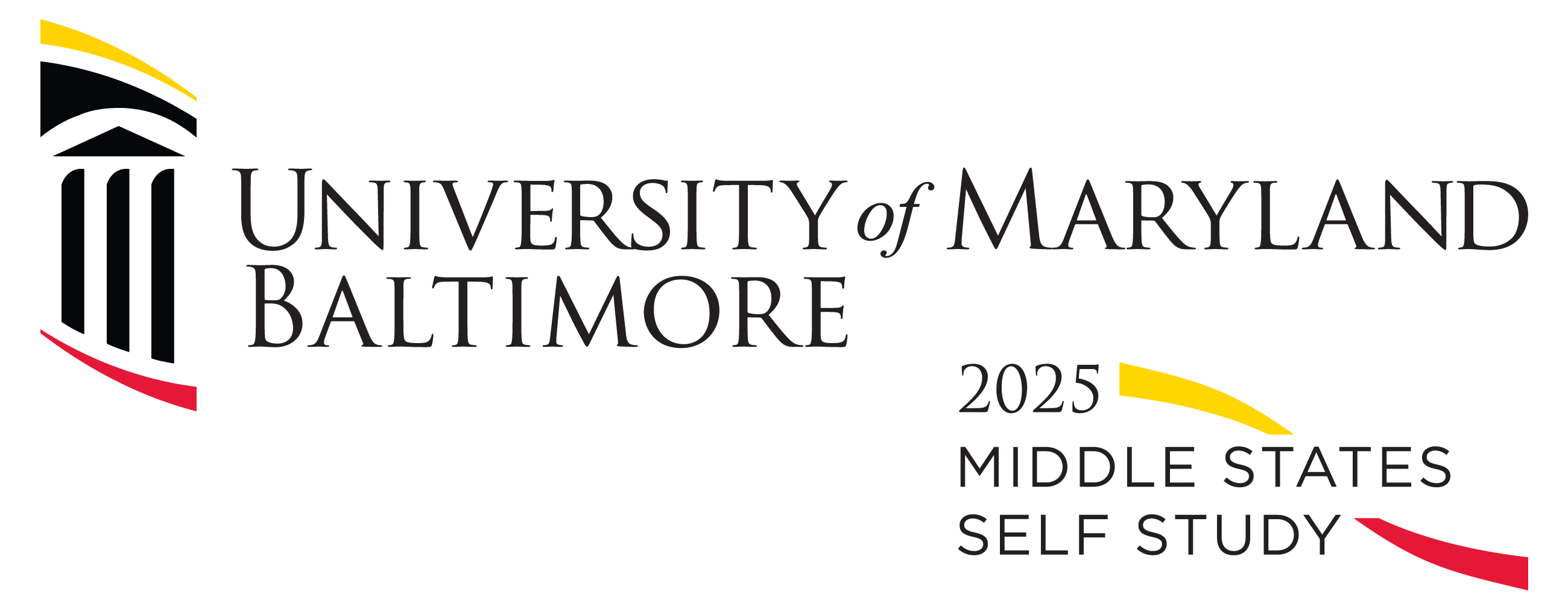The University’s president, the executive leadership team that includes the deans and vice presidents, and the Middle States Self-Study Steering Committee have selected the following institutional priorities to be addressed in the Self-Study. These four priorities closely align with the objectives and outcomes in UMB’s current Strategic Plan, and with opportunities identified through our Enterprise Risk Management program.
Alignment of SSD Institutional Priorities with MSCHE Standards
|
|
Priority 1 |
Priority 2 |
Priority 3 |
Priority 4 |
|
MSCHE Standards |
Near-Campus Vibrancy |
Strategic Enrollment Growth |
Equity, Diversity, and Inclusion Integration |
Institutional Effectiveness |
|
I. Mission and Goals |
✓ | ✓ | ✓ | ✓ |
|
II. Ethics and Integrity |
|
|
✓ | ✓ |
|
III. Design and Delivery of the Student Learning Experience |
|
✓ | ✓ | ✓ |
|
IV. Support of the Student Experience |
✓ | ✓ | ✓ |
|
|
V. Educational Effectiveness Assessment |
|
✓ |
|
✓ |
|
VI. Planning, Resources, and Institutional Improvement |
✓ |
|
|
✓ |
|
VII. Governance, Leadership, and Administration |
✓ |
|
✓ | ✓ |
Near-Campus Vibrancy
UMB is firmly anchored in two Baltimore communities: (1) The westside of the Baltimore City “downtown” area immediately adjacent to the core of the campus, and (2) West Baltimore proper, which encapsulates UMB’s community engagement catchment area as well as the neighborhoods in which our employees, students, and neighbors live and serve. The vibrancy and strengths of these two communities, to varying degrees, are negatively impacted by safety concerns, a lack of economic opportunities, and insufficient access to resources. The University is embracing its “anchor institution” status and is establishing an initiative to address critical challenges in these two communities. Some of the root causes giving rise to these challenges have persisted for generations and the need for UMB to double down on its efforts aimed at resolving them has never been more urgent. Although UMB cannot solve every challenge, UMB can invest and focus resources on targeted initiatives that yield demonstrable impact in both communities.
Strategic Enrollment Growth
Over the past 10 years, headcount enrollment across all UMB programs increased 9%, but several trends in specific programs, degree levels, and instructional methods warrant close attention. A core mission of the University is to prepare new practitioners in dentistry, law, medicine, nursing, pharmacy, physical therapy, and social work for entry into their professions. Enrollments in some of these programs have declined due to several factors, including shifting workforce demands, increased competition, and students’ evolving preferences for the use of technology in curriculum design and delivery.
UMB places a premium on the success of each of the academic programs within its seven schools, and on the success of the students enrolled in those programs. To that end, the institution seeks to optimize its strategic enrollment practices by articulating a holistic enrollment and growth strategy framework within which each of our schools retain the flexibility and responsibility for maintaining a rigorous, relevant, and thriving academic portfolio of programs that are mission-driven and promote an institutional culture of student success.
Equity, Diversity, and Inclusion Integration
Since 2010, the University has made equity, diversity, and inclusion (EDI) a strategic priority with many of its schools having their own leadership positions in this area. Over the ensuing decade, UMB took a significant step toward increasing its efforts and investment in EDI, leading to the establishment in 2021 of the Office of Equity, Diversity, and Inclusion led by a vice president reporting directly to the president. The mission of the office is to build capacity and cultivate collective action to advance sustainable, systemic change that promotes equity and justice in all dimensions of the mission and culture of UMB.
For any institution to be successful in advancing equity (assessing and addressing disparities and gaps in outcomes, representation, opportunities, and experiences); diversity (ensuring representation across multiple backgrounds, identities, and experiences); and inclusion (full engagement and participation of all), a holistic, systemic, and integrated approach is needed. On a tactical level, this involves the cohesive and comprehensive integration of diversity, equity, and inclusion into all university processes and practices, which includes admissions, recruitment, promotion, retention, training, curriculum, cocurricular activities, and efforts geared toward capacity building in university administration and leadership.
Institutional Effectiveness
UMB’s professional schools are all nationally ranked and adhere to rigorous accreditation standards established by the specialized accreditors that regularly evaluate their programs. As a result, UMB is continuously engaged in evaluating its programs and has an established culture of assessment. There is no question that assessment activity within the schools is robust, and that students are accomplishing the educational goals consistent with their program of study.
Since the last Self-Study, strides have been made in implementing standardized academic program assessment and improvement reporting and establishing institution-level learning outcomes applicable to all students, regardless of program or degree level. Across the non-academic areas, leadership has focused on ensuring the highest quality of services and efficiency of operations through the application of best-in-class user satisfaction measurement practices and cost modeling techniques. This Self-Study will provide the opportunity to carefully evaluate areas where continued improvements in assessment practices are desirable and should be employed to strengthen institutional effectiveness.



